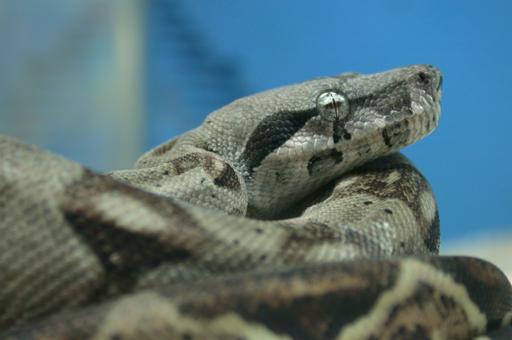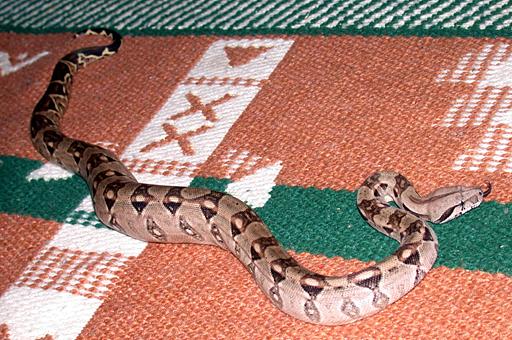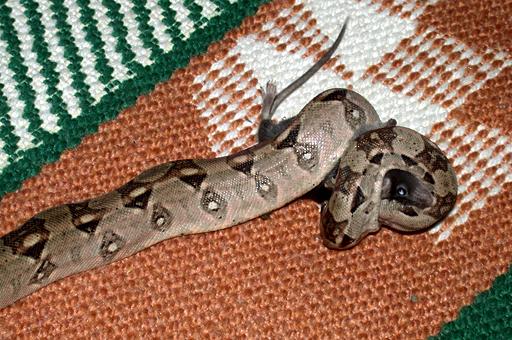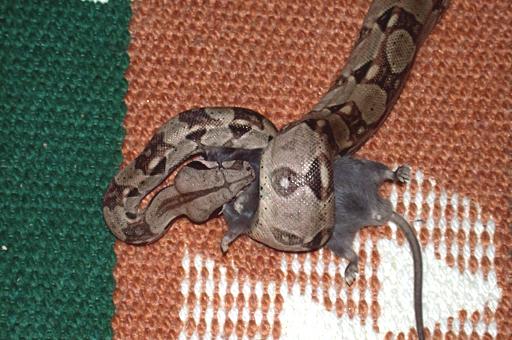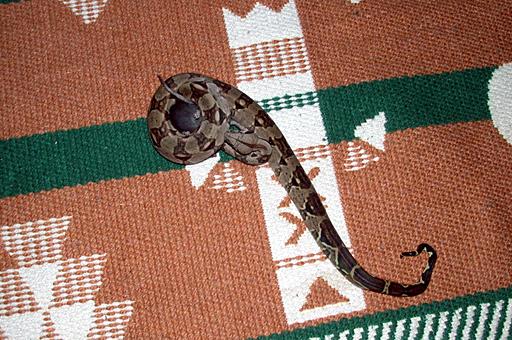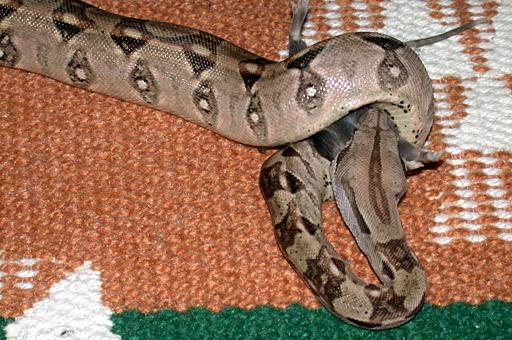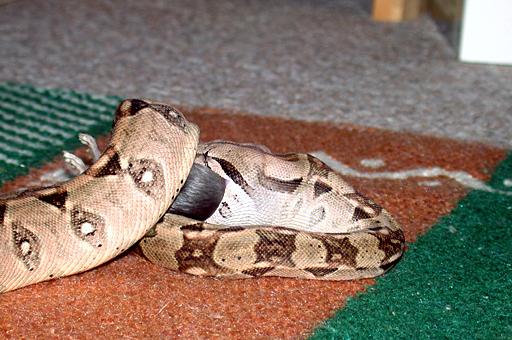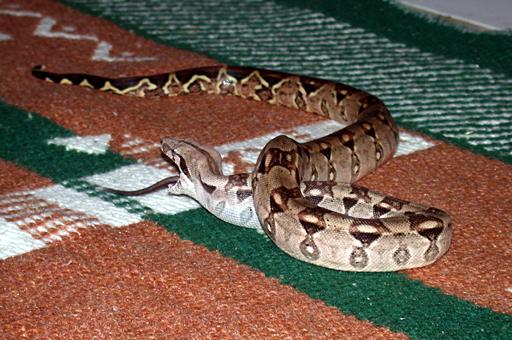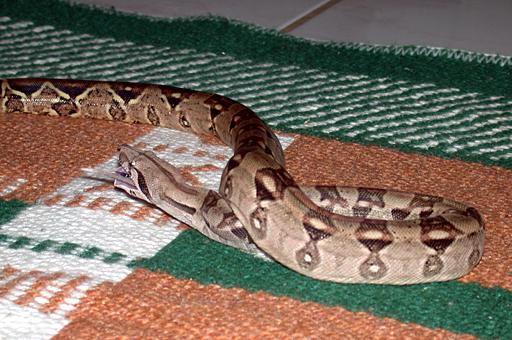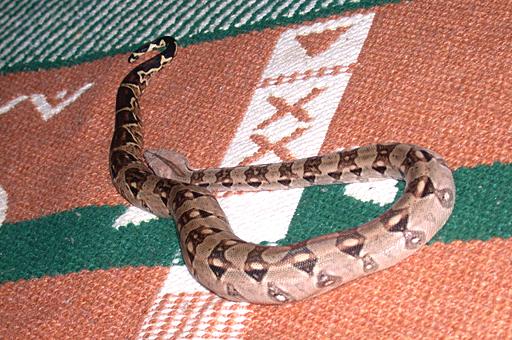The best material for substrate are aspen shavings, cypress mulch and newsprint (not chemically treated or printed). It is easy to clean and the aspen or cypress will help in keeping the
moisture at a desired level.
The enclosure should have at least one hiding place.
To monitor temperatures and humidity the tank should be equipped with at least two thermometers (one at the cold, one at the hot end) and one hygrometer for shecking the humidity (situated in the middle of the enclosure).
Another necessity is a solid heavy ceramic bowl with drinking water for the snake. In large enough enclosures a tab is a nice addition - it will let the
snake soak in it.
Boa constrictors will usually eat mice and rats in captivity. Large specimen will also take rabbits. Smaller snakes should be fed about once a week first smaller then larger mice, 2-3 at a feeding as they become larger,
and eventually switched to rats. Larger snakes will eat less frequently, two times a month. They are also known to refuse food, for months at a time - which is ok
as long as the snake does not loose weight and appears healthy.
Feeding the snake live food is not recommended. If feeding live, the snake should
never be left alone with a mice or a rat, which can severely injure or even kill your pet. A very important thing
is to always wash your hands before handling the snake - especially after handling rodents. The snake might mistake the handlers hand for food and strike at it.
Is a good practice to handle your boa daily for a few minutes - it learn to recognize you and become tame.

